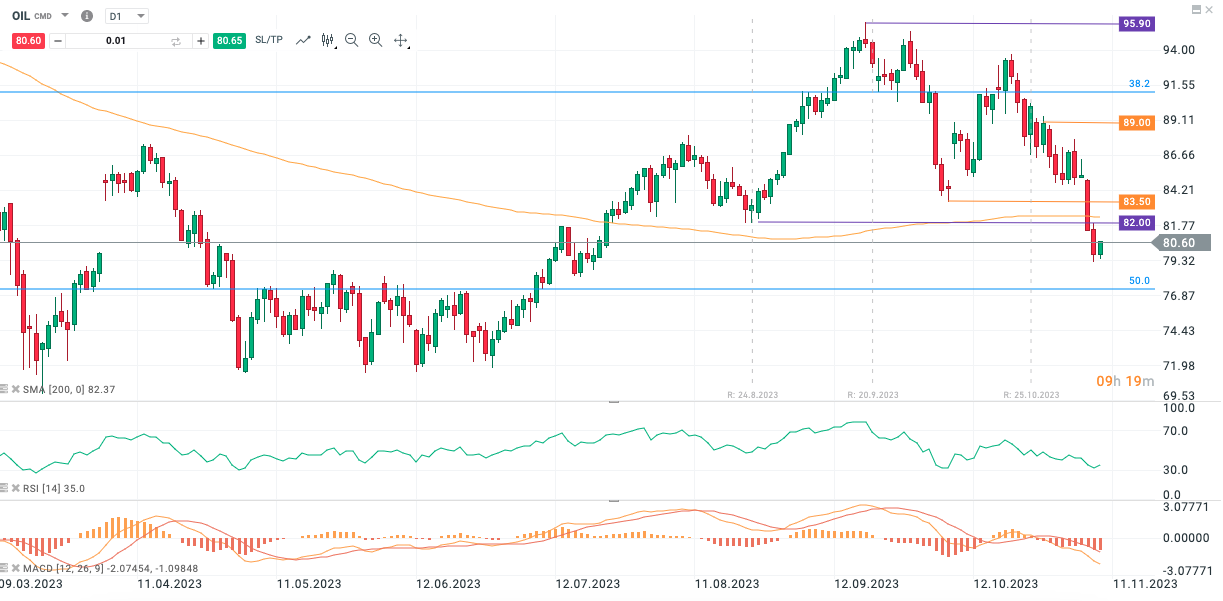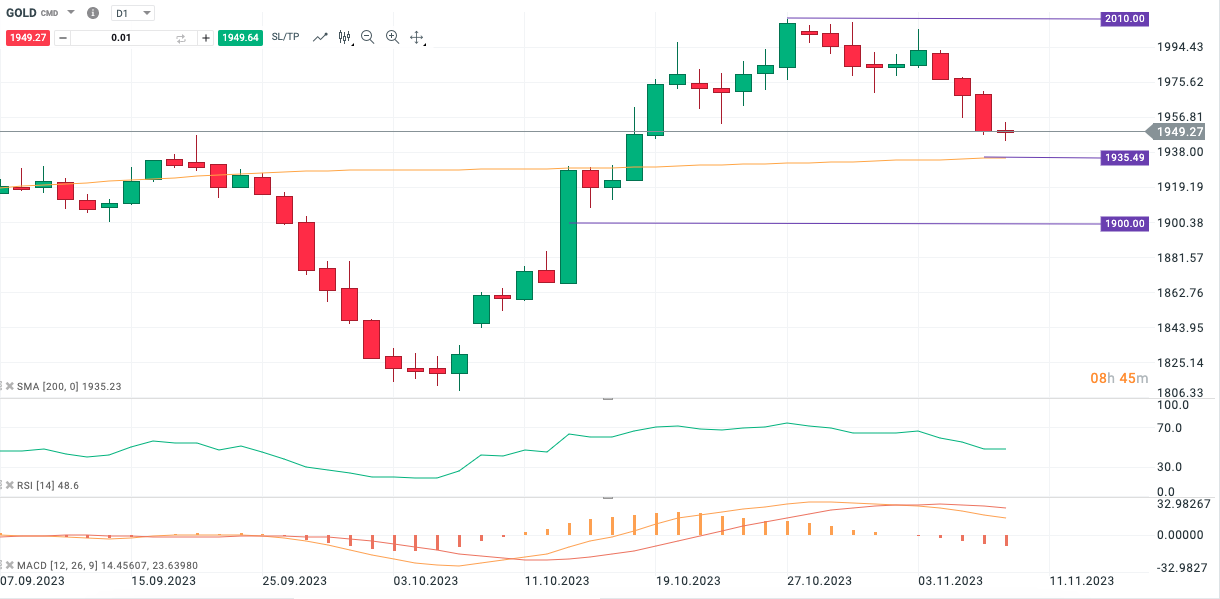Two assets have benefited the most since the outbreak of conflict in the Middle East.
Gold, a traditional safe haven in times of conflict, has come close to its all-time high and crude oil prices, already elevated due to a coordinated supply squeeze, came close to $93/barrel in the middle of October.
But both commodities have seen their fortunes reversed recently. To the casual observer, there is an appearance of synchronicity between the recent fall in prices of the two assets. However, different fundamental factors are weighing on each commodity, and their outlooks are very different.
Crude Oil
From August to September, crude oil prices saw a sustained rally, with Brent and WTI rising over 10 USD in less than a month. The twin factors behind this rally were the resilience of the US economy in the face of elevated interest rates and a coordinated production cut. On September 5, Russia and Saudi Arabia jointly announced an extension of production cuts agreed earlier in the year, pushing prices even higher. While the end of September saw a fall in prices over concerns of a global downturn, the surprise attack by Hamas on Israel and the ensuing conflict raised prices again – as markets worried about the potential for regional spillover.
Thankfully, the conflict seems to be contained, and concerns over a wider war in the Middle East are abating. Hedge funds and other oil traders have also turned their attention to the gloomy economic news from China, the EU, and the USA. This combination of a perceived lower war risk and a potential global recession has forced oil prices back down. Russia has not helped matters either. Despite agreeing to the extension of production cuts, recent data shows that its oil exports are at a 6-month high. While not in trouble with its OPEC+ partners yet, Russia will need to severely curtail exports over the next few weeks to mollify Saudi Arabia and others engaged in production cuts.
Bjarne Schieldrop, chief commodities analyst at SEB, said markets were watching for further action from Russia and Saudi Arabia if prices continue to fall. “If it goes below $80 per barrel, I think Saudi Arabia and Russia will intervene to create confidence about the price level and say ‘we’re ready to defend the price’.”
But with traders now looking worried over the economic impact of elevated interest rates well into 2024, oil prices will struggle to find support – even with further production cuts. Any flare-up in the Israel/Hamas conflict will push prices higher, but with the US, China, and Europe – the three major drivers of global growth – slowing and possibly going into reverse, the long-term upside for crude is hard to find.
Gold
Gold prices have also fallen steadily since the end of October. Before the Israel/Hamas conflict, gold prices had been struggling for most of the year. Despite support from central bank purchases and Chinese retail demand, the strong USD had limited any upside potential for the precious metal. But with the news of the Hamas attack on Israel, the price of gold spiked – rallying almost 10% over the last month.
While a traditional safe-haven asset, gold is also negatively correlated with the strength of the USD. Now that the perceived threat of a wider conflict in the Middle East has begun to fade, support for gold prices is at the mercy of the Federal Reserve’s interest rate decisions and wider risk sentiment. While it initially seemed that the Federal Reserve was done raising interest rates, recent hawkish statements from Fed policymakers have raised concerns about another rate hike in December – further strengthening the USD and placing more pressure on gold prices.
But the outlook for gold is quite different than for crude oil. While the Fed may raise interest rates again in December, this will certainly be the last one in the current cycle. With the major world economies preparing for a slowdown, or possible recession, in 2024 and no interest rate support for the USD, the long-term outlook for gold looks brighter than it does for crude.
On the Technical Front
Most traders would have noticed Brent crude oil’s plunge below the 200-day SMA (orange) on Tuesday, taking out the previous $83.50 support and the $82 psychological handle. Poised for further bearish moves, the RSI remains just above 30 (i.e. not yet oversold), and the MACD is below zero, with no sign of crossing over just yet. Without any major fundamental catalysts, traders will be eyeing the 50% Fibonacci level (2020 – 2022 low and high) at $77.

Oil Daily Chart, prepared by Alison Heyerdahl
As mentioned, like oil, gold also appears to have taken a nose dive over the last ten days, but for different reasons. It hit a new monthly high at the end of October 2023 amid conflict escalation in the Middle East. Once it was established that the war would be contained, gold prices fell sharply, further fuelled by the Fed’s hawkish stance on interest rate hikes, with the price sitting at the psychological handle of $1950. Both the RSI and MACD support further bearish moves, with a break below this level bringing a renewed interest in the $1900 level, last seen only a few weeks ago on the 10th of October, 2023.

Gold Daily Chart prepared by Alison Heyerdahl
Another support level to keep an eye on is the 200-day SMA (orange) at the $1935 level.


























